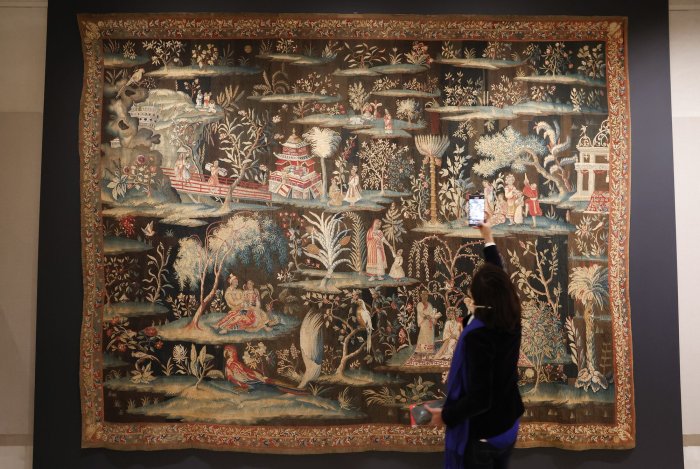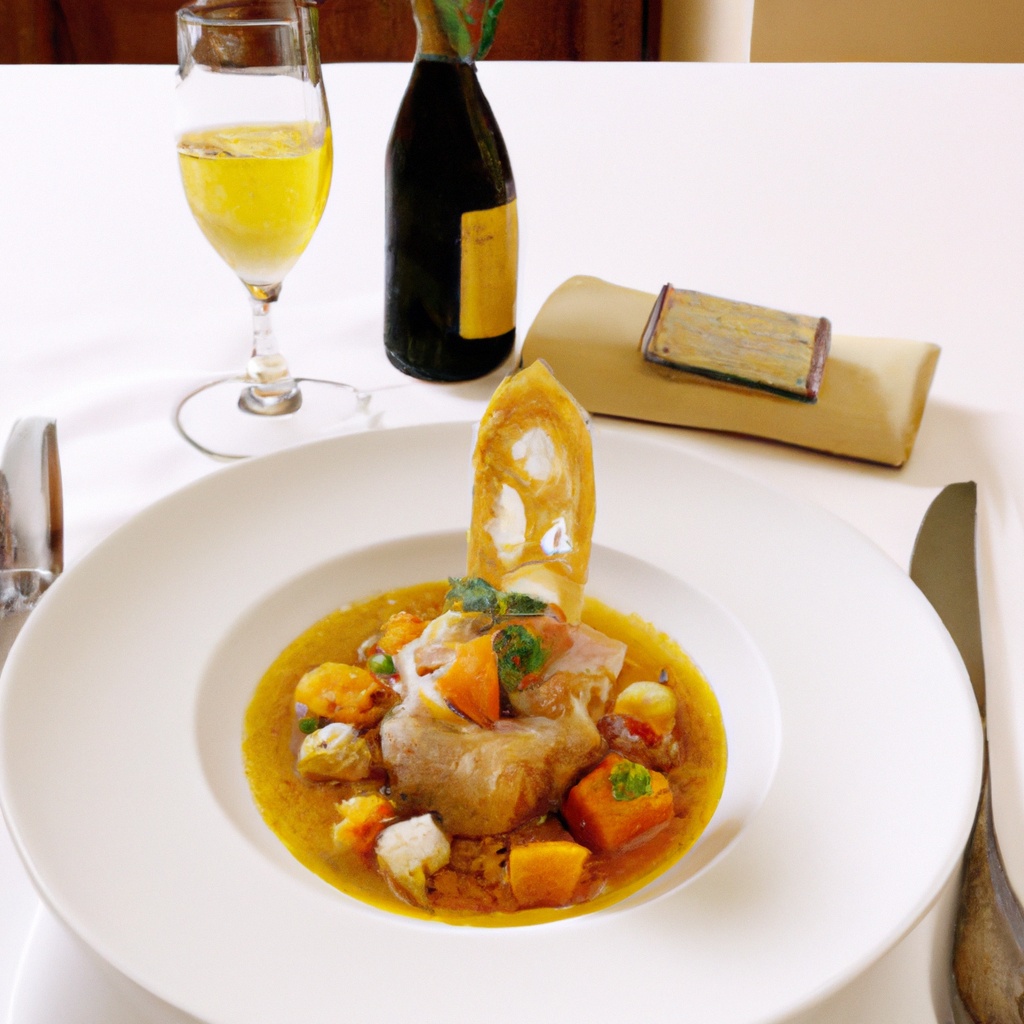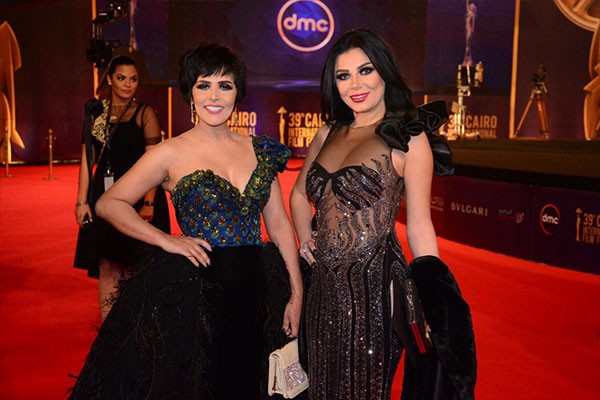Monstrous Beauty: A Feminist Reimagining Of Chinoiserie At The Met

Table of Contents
Deconstructing the "Exotic Other": Challenging Orientalist Tropes in Chinoiserie
Chinoiserie, with its intricate designs and vibrant colors, often served as a vehicle for Orientalist tropes, perpetuating harmful stereotypes about East Asian cultures. This romanticized and often exoticized portrayal of the "Other" masked the realities of colonialism and power imbalances. A feminist reinterpretation necessitates a critical examination of these historical representations.
- Examination of specific artworks: Many Chinoiserie pieces depict Asian figures in stereotypical and submissive roles, reinforcing the dominant Western gaze. Analyzing these representations, such as the portrayal of women in porcelain figurines or the depiction of landscapes, is crucial to understanding the inherent biases.
- Power dynamics in appropriation: The appropriation of Chinese and East Asian art and design by Western artists and patrons highlights the power dynamics at play. Chinoiserie was not a mere exchange of aesthetics; it was a reflection of Western dominance and the subjugation of Eastern cultures. Understanding this historical context is essential for a critical analysis of the Met's Chinoiserie collection.
- Exoticism justifying colonialism: The "exotic" nature of Chinoiserie was often used to justify colonial practices and the exploitation of resources and people in East Asia. This connection between aesthetic appreciation and colonial violence needs to be acknowledged and addressed in any meaningful discussion of Chinoiserie.
By shifting the focus from the objectifying Western gaze to the agency and creativity of the artists and the objects themselves, we can begin to deconstruct these harmful stereotypes and appreciate the cultural richness independent of colonial narratives.
Female Agency and Subversion within Chinoiserie Designs
While often presented as passive objects of the Western male gaze, a closer examination reveals instances where women actively subverted or challenged the conventional representations within Chinoiserie designs. A feminist perspective allows us to uncover these hidden narratives of resistance.
- Subtle and overt challenges to patriarchy: Some artworks subtly or overtly challenge patriarchal structures through the depiction of powerful female figures, unexpected strength, or defiance of traditional gender roles. These subtle acts of rebellion within the seemingly docile world of Chinoiserie require careful study and interpretation.
- Female figures with unexpected autonomy: While many depictions conform to Orientalist stereotypes, there are examples of female figures portrayed with remarkable strength and autonomy, defying typical depictions of submissive Asian women. Identifying these instances and analyzing their significance is vital for a feminist understanding of Chinoiserie.
- Women's role in production and consumption: Women played a significant role in the production and consumption of Chinoiserie objects, acting as patrons, artisans, and consumers. Acknowledging their contributions provides a richer and more complete understanding of the history and cultural impact of Chinoiserie.
By highlighting these instances of female agency and subversion, we can illuminate the complex and multifaceted nature of Chinoiserie, challenging the simplistic narratives imposed by Orientalist perspectives.
Reframing "Monstrous" Elements: Exploring the Grotesque and the Beautiful
Chinoiserie frequently features "monstrous" or grotesque elements – fantastical creatures, exaggerated features, and hybrid forms – often overlooked in traditional analyses. However, these elements can be reframed as powerful symbols of resistance and cultural exchange.
- Grotesque as resistance: The aesthetic of the grotesque can be interpreted as a form of resistance or subversion, challenging the idealized and often unrealistic beauty standards of Western art. The monstrous becomes a powerful symbol of rebellion.
- Challenging conventional beauty standards: Seemingly "ugly" or "unnatural" elements in Chinoiserie challenge conventional Western notions of beauty, offering a unique perspective on aesthetic appreciation. The acceptance of these "monstrous" aspects broadens the definition of beauty itself.
- Monsters as symbols of hybridity: The "monstrous" elements in Chinoiserie often represent hybridity and cultural exchange, reflecting the blending of Eastern and Western artistic traditions. These hybrid forms are powerful indicators of cross-cultural dialogue.
By re-evaluating these often-dismissed aspects, we can appreciate the richness and complexity of Chinoiserie as a dynamic and evolving artistic tradition, rather than a static and stereotypical representation.
The Met's Role in Shaping the Narrative: Curatorial Choices and Contextualization
The Metropolitan Museum of Art plays a significant role in shaping public perception of Chinoiserie through its curatorial choices and the presentation of its collection. A feminist reimagining requires a critical evaluation of the museum's role in reinforcing or challenging existing narratives.
- Analysis of exhibition choices and texts: Examining the Met's exhibition choices, accompanying texts, and labels reveals how the museum frames Chinoiserie and the narratives it prioritizes. This analysis is crucial for understanding the biases embedded in museum presentations.
- Importance of contextualization: Proper contextualization is vital for understanding Chinoiserie's historical and cultural significance. Acknowledging the historical context of colonial appropriation is crucial for a responsible and critical presentation of the collection.
- Suggestions for improved curatorial approaches: Incorporating feminist perspectives and diverse voices into curatorial approaches can lead to a more nuanced and inclusive understanding of Chinoiserie, challenging traditional, often Eurocentric viewpoints.
Museums have a responsibility to present historical objects in a way that acknowledges the complex historical and social contexts in which they were created and consumed. The Met, in its presentation of Chinoiserie at the Met, has the opportunity to lead the way in developing new and more inclusive narratives.
Conclusion:
This feminist reimagining of Chinoiserie at the Met reveals a far more complex and nuanced story than traditionally presented. By challenging Orientalist tropes, highlighting female agency, and reframing the "monstrous," we can uncover a rich tapestry of artistic expression and cultural exchange. The Met's collection, viewed through this new lens, offers a powerful opportunity for critical dialogue and a deeper understanding of the complexities inherent in Chinoiserie. To further explore this multifaceted topic, we encourage you to visit the Metropolitan Museum of Art and engage with the Chinoiserie at the Met collection with a critical and feminist eye. Continue the conversation about Chinoiserie at the Met and its ongoing reinterpretation.

Featured Posts
-
 Covid 19 Pandemic Lab Owners Guilty Plea For Fake Test Results
Apr 28, 2025
Covid 19 Pandemic Lab Owners Guilty Plea For Fake Test Results
Apr 28, 2025 -
 Two Texts Bubba Wallace Always Gets From Michael Jordan A Look Inside Their Relationship
Apr 28, 2025
Two Texts Bubba Wallace Always Gets From Michael Jordan A Look Inside Their Relationship
Apr 28, 2025 -
 Worlds Most Influential Chefs Fishermans Stew Recipe Eva Longorias Reaction
Apr 28, 2025
Worlds Most Influential Chefs Fishermans Stew Recipe Eva Longorias Reaction
Apr 28, 2025 -
 Aaron Judges Wife Gives Birth Couple Welcomes First Baby
Apr 28, 2025
Aaron Judges Wife Gives Birth Couple Welcomes First Baby
Apr 28, 2025 -
 23 Xi Racings Bubba Wallace Welcomes New Sponsor
Apr 28, 2025
23 Xi Racings Bubba Wallace Welcomes New Sponsor
Apr 28, 2025
Latest Posts
-
 Alnskht Althanyt Waleshrwn Mn Mhrjan Abwzby Ahtfae Basatyr Almwsyqa Alealmyt
Apr 28, 2025
Alnskht Althanyt Waleshrwn Mn Mhrjan Abwzby Ahtfae Basatyr Almwsyqa Alealmyt
Apr 28, 2025 -
 Mhrjan Abwzby Aldwly Brnamj Hafl Basatyr Almwsyqa Alealmyt Altbet 22
Apr 28, 2025
Mhrjan Abwzby Aldwly Brnamj Hafl Basatyr Almwsyqa Alealmyt Altbet 22
Apr 28, 2025 -
 Njwm Ealmywn Yhlwn Fy Mhrjan Abwzby Almwsyqy Aldwly Alnskht 22
Apr 28, 2025
Njwm Ealmywn Yhlwn Fy Mhrjan Abwzby Almwsyqy Aldwly Alnskht 22
Apr 28, 2025 -
 Abwzby Tstdyf Asatyr Almwsyqa Alealmyt Fy Mhrjanha Althany Waleshryn
Apr 28, 2025
Abwzby Tstdyf Asatyr Almwsyqa Alealmyt Fy Mhrjanha Althany Waleshryn
Apr 28, 2025 -
 Mhrjan Abwzby Asatyr Almwsyqa Alealmyt Fy Dwrth Al 22
Apr 28, 2025
Mhrjan Abwzby Asatyr Almwsyqa Alealmyt Fy Dwrth Al 22
Apr 28, 2025
